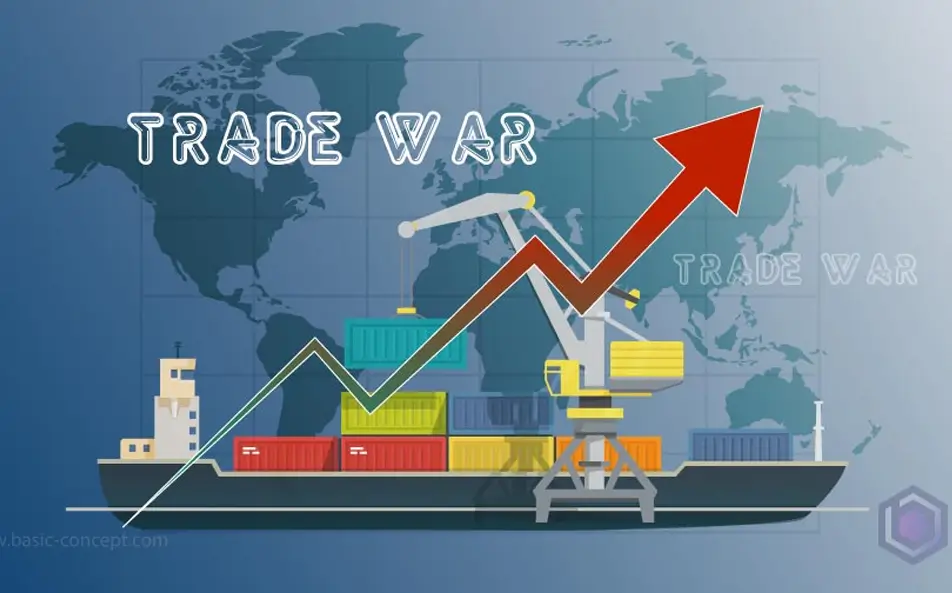Navigating Tensions: China and the U.S. Trade Landscape

The ongoing trade tensions between China and the United States have reached a critical juncture. Recently, the U.S. imposed an additional 10% tariff on all Chinese goods, igniting concerns about a potential trade war. While the U.S. has taken a firm stance, China appears to be adopting a more measured response. This article explores the implications of these tariffs, the strategic positioning of China under President Xi Jinping, and the evolving dynamics of international alliances in the face of U.S. policies.
The Impact of U.S. Tariffs on China
The recent announcement of a 10% tariff on Chinese goods has raised eyebrows in Beijing. Historically, China has responded aggressively to U.S. tariffs, but this time, the reaction has been notably subdued. In 2018, when the first round of tariffs was introduced, Chinese officials declared their readiness for a trade war. However, the current economic climate in China is different. The country has diversified its trade partnerships, establishing stronger ties with nations across Africa, South America, and Southeast Asia.
Despite the new tariffs, experts suggest that China may not feel the pressure as intensely as before. Chong Ja Ian from Carnegie China notes that Beijing might view the 10% levy as manageable. This perspective allows China to maintain a calm exterior, avoiding unnecessary panic among its citizens, who are already grappling with economic uncertainties. The Chinese government seems to be adopting a strategy of patience, possibly waiting for a more favorable moment to negotiate with the U.S.
Moreover, the muted response from China could be a tactical decision. By not escalating tensions, China aims to project stability and calmness on the global stage. This approach may serve to enhance its image as a reliable trade partner, especially as the U.S. grapples with internal divisions and unpredictable foreign policies.
Xi Jinping’s Strategic Positioning
President Xi Jinping’s leadership during this tumultuous period reflects a broader ambition for China to redefine its role in global governance. With the U.S. retreating from its traditional leadership position, Xi sees an opportunity to fill the void. His administration has actively sought to strengthen China’s influence through international cooperation and engagement.
Since the end of the COVID-19 pandemic, Xi has traveled extensively, promoting China’s commitment to global institutions like the World Bank and the Paris climate accords. This proactive stance is designed to position China as a stabilizing force in international relations. Chinese state media has emphasized this narrative, portraying Xi’s efforts as a means to foster deeper diplomatic ties with countries worldwide.
Additionally, as the U.S. freezes foreign aid and withdraws from international commitments, China is poised to step in. The Chinese government has already pledged additional funding to organizations like the World Health Organization (WHO) following the U.S. withdrawal. This strategy not only enhances China’s global standing but also allows it to present itself as a benevolent leader in contrast to the U.S. “America First” doctrine.
Evolving Alliances in the Asia-Pacific Region
The shifting dynamics between the U.S. and China have prompted countries in the Asia-Pacific region to reevaluate their alliances. Nations such as Japan, South Korea, and Australia are increasingly wary of China’s assertiveness, particularly in the South China Sea and regarding Taiwan. These concerns have led to a growing momentum for trilateral cooperation among these countries, driven by the perceived threats posed by a second Trump administration.
While these nations recognize the need to collaborate with China economically, they are also cautious. The potential for conflict over Taiwan and territorial disputes in the South China Sea has heightened tensions. As a result, countries in the region are exploring new alliances that do not solely rely on U.S. support. This shift reflects a desire for greater autonomy in navigating the complex geopolitical landscape.
The emergence of new alliances may reshape the balance of power in the Asia-Pacific region. As countries seek to protect their interests, they may find common ground in addressing shared concerns about China’s growing influence. This evolving landscape underscores the need for a nuanced approach to diplomacy, balancing economic cooperation with strategic caution.
The Calm Before the Storm
As the U.S. implements its new tariffs, China finds itself in a precarious position. The timing of the announcement coincided with the Chinese New Year, a period traditionally marked by celebration and family gatherings. This backdrop adds a layer of complexity to China’s response, as officials navigate the delicate balance between domestic sentiment and international pressures.
China’s initial reaction has been measured, with plans to pursue legal avenues through the World Trade Organization (WTO). However, the effectiveness of this strategy is questionable, given the current state of the WTO’s dispute resolution mechanisms. The U.S. has effectively stalled these processes, limiting China’s options for recourse.
As the holiday season concludes, Chinese officials will face critical decisions regarding their approach to the U.S. While there are indications that the Trump administration may seek to stabilize relations, the unpredictability of U.S. foreign policy looms large. Experts warn that the combination of tariffs and a lack of foreign assistance could further erode U.S. credibility on the global stage.
Observer Voice is the one stop site for National, International news, Sports, Editor’s Choice, Art/culture contents, Quotes and much more. We also cover historical contents. Historical contents includes World History, Indian History, and what happened today. The website also covers Entertainment across the India and World.

